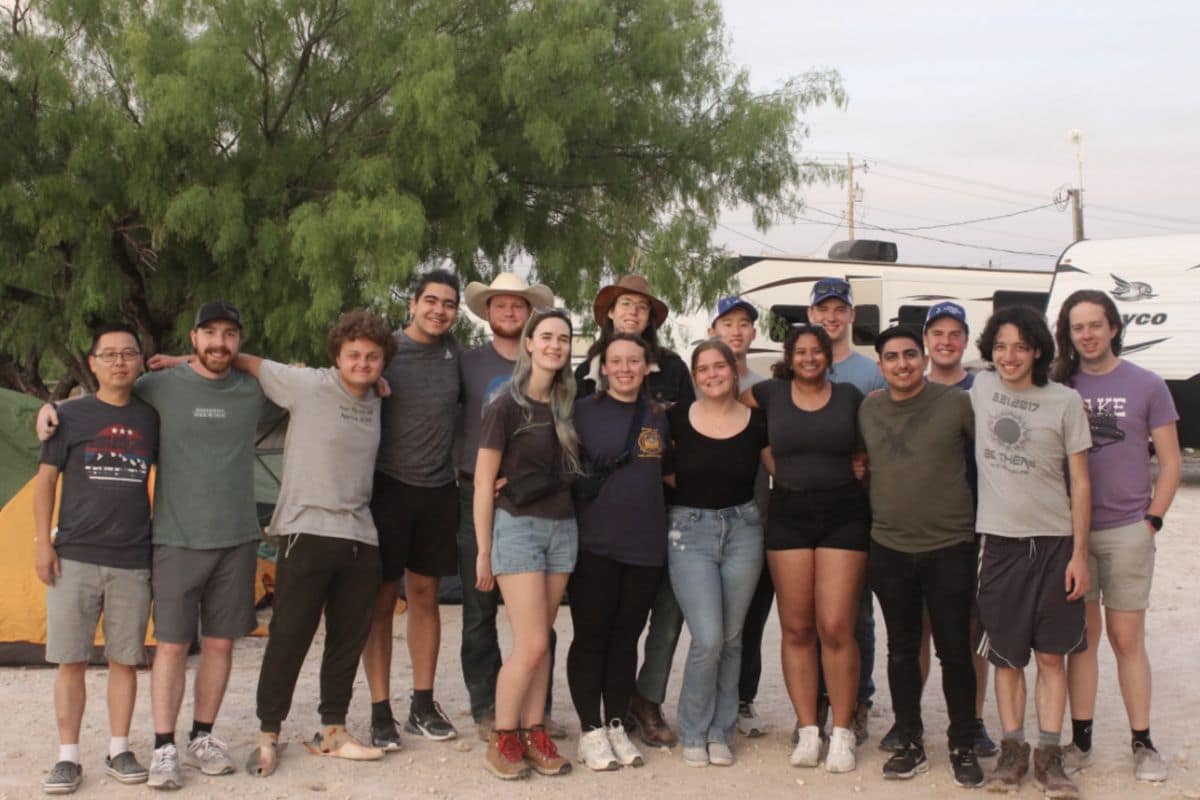Embry-Riddle Students Partner With NASA to Study Total Solar Eclipse

A student team from Embry-Riddle Aeronautical University recently completed a two-year collaborative effort with NASA, as part of the Nationwide Eclipse Ballooning Project (NEBP), to launch high-altitude weather balloons into a total solar eclipse to gather valuable stratospheric data.
“High-altitude balloons have been used for a long time to study the atmosphere and are a great way to engage students,” said Dr. Yabin Liao, assistant professor of aerospace engineering and faculty advisor for the student team known as ASCEND. “The NASA-sponsored NEBP project provided a fantastic opportunity for students to explore science and engineering as part of a meaningful research project.”
Students also collaborated with researchers from Montana State University and NASA on the project.
Gathering Data
Since joining ASCEND, team president Somaralyz Grullon and treasurer Chloe Reed have conducted multiple high-altitude balloon launches, beginning with efforts to measure atmospheric conditions during the annular eclipse in October 2023.
“I have been part of ASCEND since my sophomore year, and we have been involved in NEBP research for the past two years, from project proposal to total eclipse launch,” said Grullon, a graduating Mechanical Engineering senior.
As members of the NEBP Arizona North team, students from Embry-Riddle’s Prescott Campus traveled to Spafford, Texas, where they sent six payloads into the stratosphere on April 8 to gather data on the total solar eclipse.
“There were two groups of teams led by the NEBP project. One is for data collection using weather ballooning-grade trackers called radiosondes,” explained Reed, an Aerospace Engineering major with minors in math and computer science. “The second group is the engineering teams, which we participated in. We constructed our payloads carried by a single, heavier balloon and sent up to collect data which we could recover after launch.”
Those payloads — code-named Fred, Shaggy, Velma, Cotton Candy Glob, Scooby-Doo and Daphne — were designed to measure GPS, pressure, temperature, altitude and low-frequency radio signals, as well as capture images and video during the launch.

This amateur weather balloon launched by Embry-Riddle students carried specialized payloads into the stratosphere to gather weather during the eclipse. (Photo: Chloe Reed)
“A large part of the data collection was to show stratospheric gravity waves propagating after the eclipse due to changes in pressure and ionosphere,” said Reed. “We were able to prove there was a measurable gravity wave distortion because of the sudden drop and then rise in temperature caused by the eclipse shadow.”
Stratospheric gravity waves (SGW) are a type of wave that transfers energy from the lower atmosphere to the higher atmosphere. By studying eclipses, researchers can determine how SGWs generate and assess their impact on the climate.
“This sudden temperature change causes a pressure perturbation and, as the atmosphere equalizes after the disturbance, causes a wave formation,” Reed added.
After launch, the team’s balloon traveled nearly 100 miles above Vanderpool, Texas, ascending to over 98,000 feet before rupturing and falling back to the surface outside of Center Point, Texas, over 135 miles away.
Upon retrieval, the team assessed their payloads and shared their findings with NASA, which will study the data from all participating NEBP teams to determine how total solar eclipses impact atmospheric weather conditions.
“Our goal for this project was to prove that we could see any measurable distortion reliably with amateur-built payloads,” said Reed. “The measurements we recorded proved that the amateur payloads were viable options for further atmospheric gravity wave research.”
Meeting of the Minds
In late May, the NEBP invited Grullon and Reed to present their findings at the Academic High-Altitude Conference in Minnesota. Joined by fellow NEBP participating teams, the assembly shared data and experiences from the eclipse that focused on furthering education, research and technology development for future endeavors.
“I am extremely pleased by the team’s performance throughout the project,” said Liao. “The students designed the payload, flew the balloon and analyzed the data — all of which took significant work and dedication. The conference was a great platform for the students to share their experience and present the results.”
The event also brought Grullon’s participation in ASCEND to a close. A recent Prescott Campus graduate, Grullon has accepted a position as a software engineer at Aurora Flight Sciences.
“Working on this project has been a fulfilling conclusion to my collegiate journey,” Grullon said. “The skills I developed during this collaboration directly contributed to my internship and job offer at Aurora.”
Reed is approaching her final semester at Embry-Riddle and remains actively involved in ASCEND. The feedback she received at AHAC will contribute to new materials and experiments for ASCEND's continued research.
“It was a wonderful opportunity to connect with other NEBP teams and share our research,” said Reed. “We received valuable feedback and ideas for future experiments.”

 Keaton S. Ziem
Keaton S. Ziem